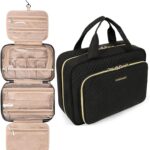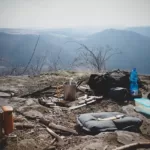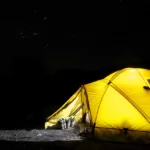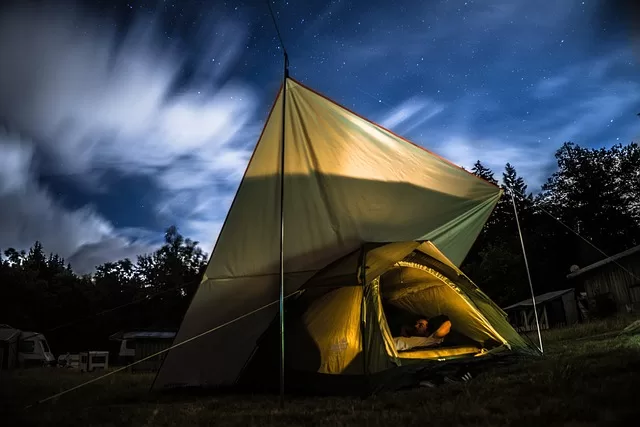Have you ever been camping in the great outdoors and encountered a wild animal? The thrill of being close to nature can quickly turn into fear and danger when it comes to dealing with wildlife while camping. Whether you’re an experienced outdoorsman or a novice camper, it’s important to be prepared and know what to do (and what to avoid) when encountering wildlife in its natural habitat.
In this blog post, we will provide you with some essential tips on how to deal with wildlife while camping, including how to research the area, prepare your campsite, and what to do (and not to do) if you come face to face with a wild animal.
Researching the Area
Researching the area where you plan to camp is an important step in ensuring your safety when dealing with wildlife while camping. Using some apps and websites for campsite reservations like Campedium and Hipcamp can help you compare available campsites and choose the safest or figure out what is obtainable. Knowing what to expect and how to interact with wildlife can help ensure a safe and enjoyable camping experience for everyone involved. There are several factors to consider when researching the area, including:
Understand the Local Wildlife
When planning a camping trip in an area with wildlife, it’s crucial to research the local wildlife to understand their behavior, habitat, and potential risks they pose to humans. Some animals, such as bears, can be more aggressive during certain times of the year or when protecting their young. It’s important to know what types of wildlife you may encounter and how to safely interact with them while enjoying the things to do while camping with family.
Know Potential Hazards
Knowing the potential hazards of the area is also crucial to help you in dealing with wildlife while camping. This can include things like poisonous plants or venomous snakes, which can be found in some areas. Understanding the potential risks can help you prepare and plan for your camping trip accordingly. For example, if there is a high risk of encountering snakes, you may want to bring appropriate footwear and clothing.
Be Aware of Any Regulations
It’s also important to be aware of any regulations in the area when dealing with wildlife while camping. Many parks and campsites have rules and regulations in place for dealing with wildlife, such as storing food and trash properly or requiring bear-proof containers. These rules are in place for the safety of both humans and wildlife, and it’s important to follow them to avoid any potential conflicts.
Understand the Ecosystem
Understanding the ecosystem of the area you plan to camp in can also be helpful in dealing with wildlife. For example, knowing which plants are edible or poisonous can help you avoid potential hazards, and understanding the flow of waterways can help you avoid areas where wildlife may congregate.
Preparing Your Campsite
Preparing your campsite properly is an essential step in dealing with wildlife while camping. The following tips can help you in setting up camp in a way that minimizes your risk of attracting wildlife. By following these tips, you can minimize your risk of attracting wildlife to your campsite and reduce your risk of a potentially dangerous encounter.
Choose a Safe Location
When selecting a location for your campsite, choose an area that is away from areas where wildlife might congregate, such as streams or animal trails. Look for a clear, flat area that is not too close to trees or bushes, which can attract animals seeking shelter.
Store Food and Other Attractants Properly
Your camping food and snacks, garbage, and other items that might attract wildlife should be stored in airtight containers and kept away from your campsite. Many campsites have bear-proof food storage lockers, and it’s important to use them if they are available. If bear-proof lockers are not available, hang food and other attractants from a tree at least 10 feet off the ground and 4 feet away from the trunk of the tree. Check out these camping coolers and storage to properly preserve and store your foods and drinks.
Keep a Clean Campsite
Keep your campsite clean and free of food scraps or garbage. Learn the tips for waste management and sanitation while camping like disposing of waste properly in a trash bag and storing it in a bear-proof container or hanging it from a tree. Also, use the proper camping toiletries and take sanitation seriously to avoid attracting wildlife.
Avoid Scented Products
Avoid bringing scented products like lotions, perfumes, and deodorants into your campsite, as they can attract animals. If possible, choose unscented camping toiletries for your camping trip.
What to Do if You Encounter Wildlife
Encountering wildlife while camping can be a thrilling experience, but it can also be dangerous if not handled properly. The following tips can help you stay safe if you encounter wildlife while camping:
Stay Calm
The most important thing to do if you encounter wildlife is to stay calm. Avoid running away or making sudden movements, which can startle the animal and provoke an attack.
Give the Animal Space
If you encounter a wild animal, give it plenty of space. Back away slowly and avoid making eye contact, which can be interpreted as a threat.
Make Noise
Making noise can help scare off wildlife and avoid a potential confrontation. Talk in a calm voice, sing, or clap your hands to make noise and let the animal know you are there.
Do Not Feed the Wildlife
Feeding wildlife can habituate them to humans and make them more aggressive. Never offer food to wild animals, even if they appear friendly.
Read also The Importance of Having a Compass on Your Camping Trip
Use Bear Spray
If you’re camping in an area with bears, carry bear spray and know how to use it. Bear spray can deter an attacking bear and give you time to escape.
Back Away Slowly
If you encounter a bear, moose, or other large animals, back away slowly and avoid turning your back on the animal. If you need to move away quickly, move sideways, as animals are less likely to attack from the side.
Seek Shelter
If you encounter a dangerous animal and cannot escape, seek shelter in a car, building, or other structure if possible.
What to Avoid When Dealing With Wildlife
When camping in areas with wildlife, it’s important to be aware of things to avoid that can increase your risk of a dangerous encounter. When dealing with wildlife while camping, you should know what to avoid to prevent provoking or attracting these animals. By avoiding these common mistakes, you can minimize your risk of a dangerous encounter with wildlife while camping. Remember to always respect wildlife and their habitat and take steps to avoid conflicts with them. The following tips can help you avoid conflicts with wildlife while camping:
Also read The Must-Have Camping Clothing and Apparel for Your Next Outdoor Adventure
Do Not Approach Wildlife
It’s important to never approach or try to touch wildlife, as this can provoke an attack. Even seemingly docile animals can become aggressive if they feel threatened.
Do Not Leave Food or Trash Out
Leaving food or trash out in the open can attract wildlife to your campsite. Be sure to store food and trash properly in bear-proof containers or hang them from a tree as described earlier.
Do Not Leave Pets Unattended
Domestic pets can attract wildlife and put themselves in danger. Keep pets on a leash and under close supervision at all times.
Do Not Run
Running can provoke a predatory response from some animals, such as bears or mountain lions. Avoid running and back away slowly if you encounter wildlife.
Do Not Make Noise at Night
Loud noises at night can disturb wildlife and cause them to become agitated. Keep noise levels low in the evening and early morning to avoid disturbing wildlife.
Do Not Approach Baby Animals
Baby animals may appear cute and harmless, but their parents are likely nearby and may become aggressive if they feel their young are threatened. Keep a safe distance from baby animals and do not approach them.
Conclusion
Encountering wildlife while camping is sure a thrilling experience, but it’s important to be prepared and take steps to avoid dangerous encounters. Taking these tips for dealing with wildlife while camping like researching the area, preparing your campsite, knowing what to do if you encounter wildlife, and avoiding common mistakes are all crucial for a safe and enjoyable camping trip. Remember to always respect wildlife and their habitat, and take the necessary precautions to minimize your impact and avoid conflicts with them. These tips are sure to be the best ways to plan an enjoyable and successful camping trip by staying away from wildlife or dealing with them appropriately when you encounter them



























